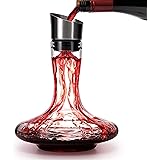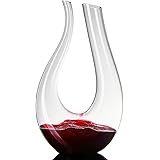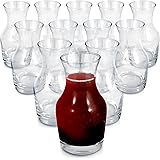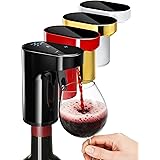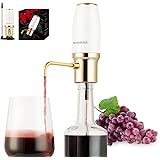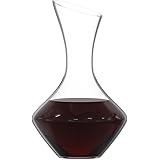Wine 101: Understanding Wine Basics for Beginners
Embarking on the journey of wine appreciation can feel daunting, but it doesn’t have to be. As highlighted in the insightful video above featuring wine expert Simone, understanding the world of wine begins with grasping a few fundamental concepts. This comprehensive guide, expanding on Simone’s crash course, will demystify the essential aspects of wine, making your next sip more informed and enjoyable.
East Coast vs. West Coast Wines: A Tale of Terroir
The difference between East Coast and West Coast wines is as distinct as comparing two different countries. Simone aptly describes West Coast wines as “power” and East Coast wines as “elegance.” This stylistic divergence stems primarily from their unique climates and soils, a concept known as “terroir.” California, with its abundant sunshine and consistent weather, often produces full-bodied, fruit-forward wines. Think robust Cabernet Sauvignon or rich Chardonnay from regions like Napa Valley or Sonoma.
Conversely, East Coast regions like Georgia, Virginia, and New York face more challenging viticultural conditions. Cooler temperatures, higher humidity, and varied soil compositions necessitate a different approach to grape growing. Wineries here often cultivate specific grape varieties that thrive in these environments, leading to wines that are typically lighter in body, higher in acidity, and more subtle in their aromatic profiles. Examples include Riesling, Cabernet Franc, or unique hybrid varieties like Vidal Blanc, offering a distinct elegance and freshness.
Exploring the Vast World of Wine Varieties
Did you know there are approximately 6,000 different grape varieties used for wine production globally? While many enthusiasts might be familiar with a handful, like Chardonnay or Pinot Noir, this incredible diversity allows for an endless spectrum of flavors and styles. These varieties are generally split almost equally between red and white grapes, with rosé wines existing as a beautiful intermediary.
Beyond color, wines are also categorized by their style, encompassing everything from sparkling wines (like Champagne or Prosecco) and fortified wines (such as Port or Sherry) to dry reds and sweet whites. Each grape variety possesses its own unique aromatic and flavor profile. For instance, a Sauvignon Blanc is typically crisp and zesty with notes of grapefruit and grass, while a Syrah (or Shiraz) is often bold and spicy with dark fruit and pepper characteristics. The nuanced differences are what make exploring wine so captivating, inviting you to discover new favorites continuously.
The Sulfite Conundrum: Unraveling Wine Headaches
One of the most common questions for wine beginners is: why do some wines cause headaches or hangovers? Simone, with his experience producing millions of bottles of wine, identifies sulfites as a primary culprit for these unpleasant reactions. Sulfites are natural compounds found in wine, but they are also added during winemaking as a preservative to prevent spoilage and oxidation.
While most people can tolerate sulfites without issue, a significant portion of the population, including Simone himself, has varying degrees of sensitivity. For these individuals, sulfites can trigger instant headaches or contribute to more severe hangovers. The good news is that winemakers are increasingly exploring techniques to produce wine with very limited or no added sulfites. This focus on “healthy wine” allows the natural components of the grape, like tannins, to act as antioxidants, offering a purer expression of the wine and a potentially headache-free experience.
Demystifying Wine Prices: What Dictates the Cost?
The price of a bottle of wine can vary wildly, leading many to wonder what truly determines its value. As Simone explains, several key factors contribute to a wine’s price tag, not just the quality of the juice inside. Understanding these elements can help you make more informed purchasing decisions.
-
Grapes and Appellation
The type of grape and its origin play a crucial role. Grapes grown in highly renowned regions, or “appellations,” command higher prices. For example, Cabernet Sauvignon grapes from Napa Valley can be significantly more expensive than the same variety grown just a short distance away. This is largely due to the marketing power and prestige associated with a famous appellation, allowing wineries to justify a higher price point simply by listing the region on the label.
-
Winemaking Techniques and Aging
The winemaking process itself adds to the cost. Red wines, which are typically aged longer in barrels before release, incur higher production expenses. Barrels, particularly new oak barrels, are a significant investment. Simone notes that one barrel, costing around $1,300, produces only about 30 cases of wine and needs to be replaced annually. Furthermore, wine evaporates during barrel aging – famously known as the “angel’s share” – meaning wineries lose a portion of their product, a cost factored into the final price. This concentration, however, enhances the wine’s quality, making it richer and more complex over time.
-
Marketing and Brand Reputation
The power of branding and marketing cannot be underestimated. A well-established brand or a wine from a highly sought-after estate can command a premium price regardless of the inherent quality difference from a lesser-known producer. This is especially true in the $12-$30 retail price range, where, as Simone points out, price is not necessarily an indicator of superior quality. Consumers should be aware that expensive marketing campaigns often contribute to a higher bottle price.
For domestic wines, Simone suggests that if you’re spending above $35, you should expect to find a high-quality product. For international wines, the threshold is typically higher, around $40-$45, due to additional import costs and the prestige of Old World regions.
The Story in the Bottle: Understanding Vintages
Every wine bottle proudly displays a vintage year, but what does it truly signify? The vintage refers to the year the grapes were harvested. This information is extremely important because grape growing is an outdoor agricultural endeavor, highly susceptible to unpredictable weather patterns.
A specific vintage can reveal a great deal about what to expect from the wine. An exceptionally hot, cold, rainy, or dry season directly impacts the grapes’ sugar levels, acidity, and overall concentration. For instance, a very hot year might produce grapes with higher sugar and lower acidity, leading to a richer, fruitier wine with higher alcohol. Conversely, a cooler year might result in grapes with higher acidity and less ripeness, yielding a lighter, more elegant wine. This is why high-end wines from famous regions often have different prices for different vintages – some years are simply superior. Wine critics and regions even publish vintage charts, detailing the quality of specific years, providing valuable guidance for connoisseurs.
Decoding Wine Characteristics: Color and Tannins
Beyond price and vintage, two immediate characteristics can tell you a lot about a wine: its color and the presence of tannins.
-
Color and Body
As a general rule, the intensity of a wine’s color often correlates with its body and flavor profile. A deep, opaque red color, typical of grapes like Syrah or Cabernet Sauvignon, usually indicates a full-bodied, powerful wine with concentrated flavors. On the other hand, a lighter, more translucent red, such as that seen in a Pinot Noir or Gamay, typically suggests a lighter-bodied wine with delicate aromas and flavors. For whites, a pale straw color often denotes a crisp, unoaked wine, while a deeper golden hue might suggest an oaked or aged white, like certain Chardonnays.
-
Tannins Explained
Tannins are natural phenolic compounds found in grape skins, seeds, and stems, and they are also extracted from oak barrels during aging. They are responsible for the sensation of astringency in wine – that mouth-drying, puckering feeling. When you drink a bold red wine and feel your gums tighten, you’re experiencing the impact of tannins reacting with the proteins in your saliva. While this sensation can be intense in young, tannic wines, tannins also contribute to a wine’s structure, complexity, and age-worthiness.
Beyond their tactile contribution, tannins are powerful natural antioxidants. Simone emphasizes their crucial role in protecting wine, serving a similar function to sulfites. By enhancing the natural tannins, winemakers can reduce or even eliminate the need for added sulfites, producing wines that are not only more natural but potentially less likely to cause headaches for sensitive individuals.
Innovation at Chateau Elan: A Unique Winemaking Philosophy
Chateau Elan, under Simone’s expert guidance, stands out for its unique approach to winemaking and its diverse offerings. The winery prides itself on providing an unparalleled experience with 29 different wines crafted from approximately 30 distinct varieties.
One of Chateau Elan’s most distinctive practices is its dual sourcing strategy: growing grapes both in Georgia and California. This allows them to harness the best of both worlds, ensuring that each grape variety thrives in its ideal climate and soil, thereby maximizing quality. They are currently the largest producer of wine from Georgia-grown grapes, showcasing a commitment to regional viticulture. Additionally, Chateau Elan engages in fascinating international collaborations, including producing a unique pineapple sparkling wine in Tahiti and traditional Italian wines like Moscato and Dolcetto through twin programs in Italy.
At the heart of Chateau Elan’s philosophy is a dedication to healthy and sustainable winemaking techniques. This involves using extremely low amounts of sulfites, avoiding filtration, and eschewing fining agents. Notably, their Moscato wines are vegan-certified, making Chateau Elan the first winery in the Southeast to achieve this distinction. These practices not only contribute to the wine’s purity and expression but also align with a growing consumer demand for natural and ethically produced wines.


